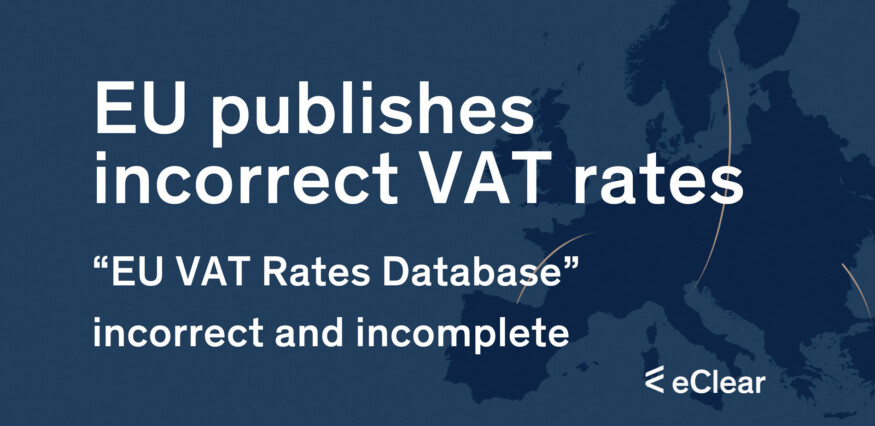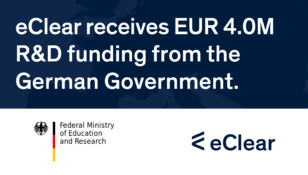The database of VAT rates for the EU-27 published by the EU Commission (Tax-UD department) is partly incomplete and incorrect. “The database has obvious gaps. This is a competitive disadvantage for e-commerce merchants who have to rely on the accuracy of the information and bother customers with the incorrectly reported VAT,” says the CEO and Chairman of the Board of eClear AG, Roman Maria Koidl.
„This is a competitive disadvantage for e-commerce merchants who rely on the information’s accuracy and bother customers with the incorrectly reported VAT.“
Reduction of the VAT rate from 19% to 16% in Germany, not considered
For example, the database did not record the temporary VAT reduction from 19% to 16% for Germany. “We pointed this out to the Commission in a conversation last year,” Koidl said. But the incorrect data records remained. According to its statement, the Commission assumes no liability for its data. On the database’s website, the Commission admits that it does not guarantee that the information provided is up-to-date, error-free, and complete.
In addition to erroneous data records due to a lack of updates, repeated checks in the tax codes reveal another weakness or inaccuracy. The “EU VAT Rates Database”, published in September, only knows the first eight digits of the tax codes’ regular ten to eleven digits. As a result, merchants receive incorrect information that can result in additional or reduced payments to the tax authorities: For example, the ingredients of a product may require the application of the reduced VAT rate. This detailed information is usually assigned following the eighth digit in the tax code.
ECOFIN Council discusses making the application of reduced VAT rates more flexible for member states
The EU VAT system is highly complex: children’s clothing is reduced in Luxembourg, fruit juice in Poland, red wine is reduced in Portugal, and milk in Germany. At its meeting on 18 June, the ECOFIN Council discussed further guidelines for reforming VAT rates. Among other things, the proposals ask for more flexibility and equality for the member states to apply reduced VAT rates. A further increase in country-specific rules is to be expected.
These rules apply to imports from third countries such as China and cross-border mail order within the EU – both for merchants and for marketplaces such as Amazon and eBay. The upcoming EU reform further intensifies the issue. When the EU VAT e-commerce package comes into force on 1 July, previous delivery thresholds will be abolished and replaced by an EU-wide threshold (€10,000). Merchants will then be obliged to register for VAT in the destination countries or participate in the EU’s OSS procedure. And they must apply the country-specific VAT rates.
„With eClear’s VATRules updates or temporary changes are automatically taken into account.“
VATRules: eClear database with 800,000 up-to-date tax codes
“eClear’s VATRules simplifies this process,” says Annett Schaberich, syndic tax advisor and Vice President Tax Compliance at eClear. “With the database, merchants always use the current applicable VAT rates when calculating product prices. Updates or temporary changes are automatically considered. VATRules minimises costs and time as corrections are significantly reduced.”
The VATRules database comprises 800,000 tax codes, including 50,000 exceptions, and knows all VAT rates and rules that must be applied in the EU-27 countries and the UK. VATRules assigns them to the respective product groups of the online retailer. Thanks to a 14-digit code, all exemptions, reductions and VAT regulations applicable in the EU are recorded. Fully automated, the continuously updated VAT rates are delivered on demand, embedded in the order processes and applied.
In addition, eClear, with its full-service solution ClearVAT, takes over the VAT reporting fully automatically in all EU-27 countries. The obligatory VAT registration in the EU member state can then be omitted. The Berlin company pays the VAT amounts directly to the responsible tax office in the EU member state, for which eClear assumes liability and the audit risk.







